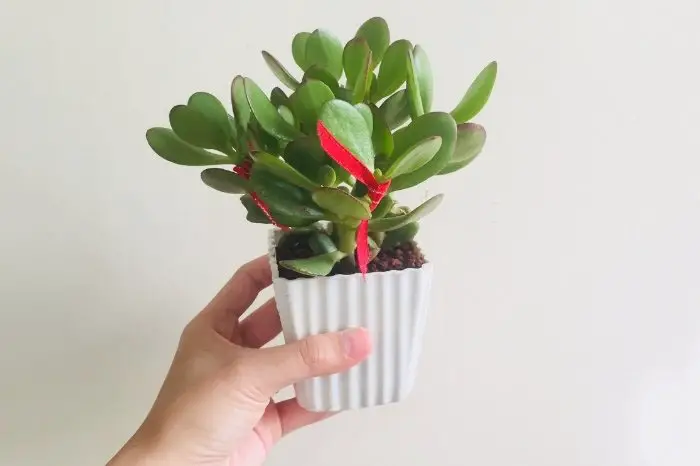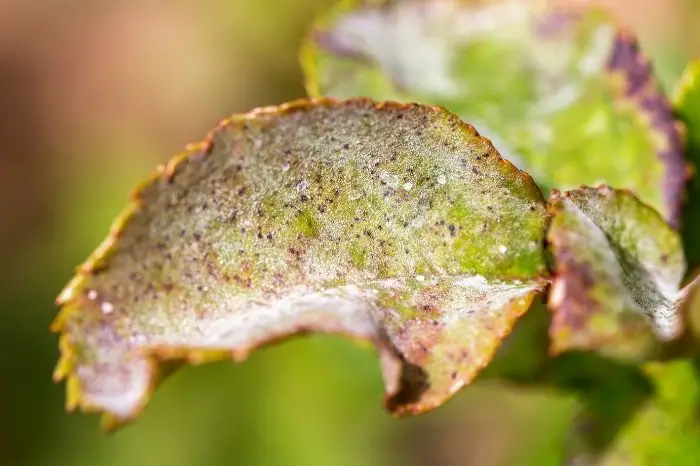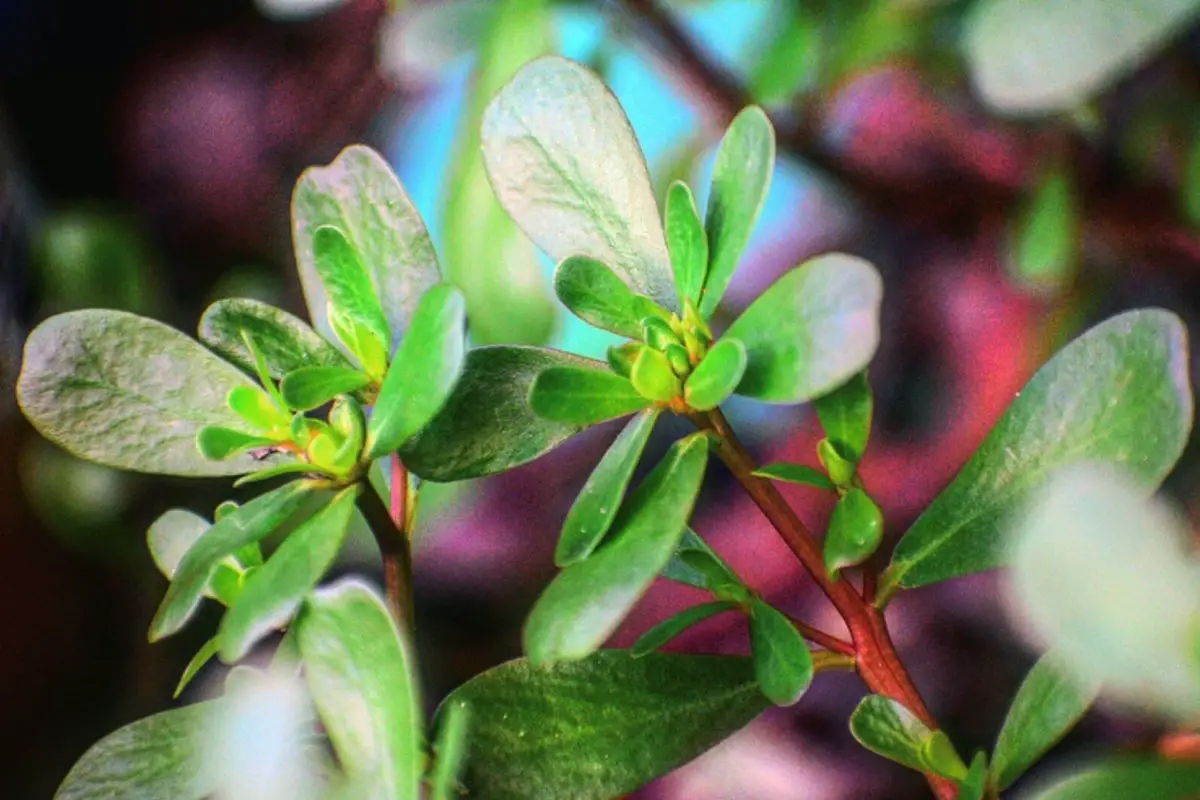Last Updated on May 1, 2022 by Cristina
Jade plant may be an easy-to-maintain houseplant, but a few issues may arise with this plant. Bacterial soft rot jade plant is one situation that can cause serious issues to your jade plant if you do not act fast to tackle the situation.
The bacteria is caused by a type of bacteria known as Erwinia and once it affects your jade plant, these bacteria tend to feed on every part of the Jade plant. This bacterial soft rot won’t just affect your jade plant, it can as well other plants you have in your garden.
Bacterial soft rot jade plant as we can see tends to be a serious issue but do you know how to identify these issues? Do you know the causes and how you can tackle such situations? If you have all these questions troubling your mind, not too worry about them because this post will answer what you need to know about all of these.
Jade Plant Bacterial Soft Rot: What Is Exactly Is This Situation?
Bacterial soft rot jade plant is a plant issue that occurs on the plant of jade plant and it is caused by a bacteria known as Erwinia.
So, once the bacterial soft rot spreads all through the plant, jade plant starts to wilt and eventually drop. Bacterial soft rot in jade plant can cause the plant tissue to turn brown, becomes mushy, and develops a bad odor. The bacteria can deprive the growth of jade plants and then collapse the plant.
This situation is usually a serious problem that can occur in jade plants that needs to be acted upon quickly. However, you should be aware that there isn’t any permanent solution to fix the issue. This situation can only be managed if you can cultivate some great gardening practices.
Now, let’s discuss some of these helpful gardening practices you can imbibe and we will share some tips on ways you can tackle the situation.
Check Out Areca Palm Low Light Requirements And Other Plant Care Tips
Helpful Tips That Can Manage The Situation Of Bacterial Soft Rot
When trying to manage the situation, it is important you act fast in all this. So, follow the tips below to manage the problem:
1. Plant Inspection And The Issue
Once you notice some problem with your jade plant, try to inspect the plant so you can properly identify the situation. So, when you notice symptoms such as drooping of leaves and the stem feeling soft, then further plant inspection is one of the first things to do.
So, when you’ve determined that you have bacterial soft rot problems, take the following steps below.

2. Plant Isolation – Bacterial Soft Rot Jade Plant
After identifying that the issue you’re facing is bacterial soft rot, it is crucial you isolate the plant from other plants. This is to prevent the further spreading of this disease.
3. Take Away Parts Affected By The Bacteria And Discard The Soil
If you were able to catch the situation on time, you can quickly take away the parts that are affected. Also, if you notice bacterial damage to some leaves and branches, just prune off the plant and throw away these affected parts properly. Also, throw away the soil.
4. Transplant
Once you’ve taken away the affected parts, just transplant your jade plant into a new pot. Doing this can supply better growing conditions for the plant.
The new pot, fresh soil, new growing medium, and nutrient in the fresh soil can boost the growth of the plant.
5. Improve Air Circulation
Usually, because this problem arises from wet conditions because the bacteria thrive in such conditions, you need to give the plant good airflow. This can help the surface area dry faster
Note that the dry surface does not encourage the growth of this bacteria and this is why it is necessary to keep the plant dry and the surface area dry.
Mighty Mint 32oz Plant Protection Peppermint Spray for Spider Mites, Insects, Fungus, and Disease
6. Avoid Over-watering – Bacterial Soft Rot Jade Plant
As you’re trying your possible best to manage the circumstances, ensure you don’t over-water your plant. Only water when you notice a sign of under-watering and avoid misting the plant.
Side note: note that the tips listed are just ways of trying to manage the problem and not a definite solution. If you were not able to notice the bacterial soft rot on time, your plant may be beyond repair and you may need to discard the plant properly.
Other Jade Plant Diseases
Apart from bacterial soft rot, jade plants also face other plant diseases and some include:
1. Black Ring
Black ring in jade plant is caused by a virus and it leaves black rings under the leaves of this plant. Unlike the other types of diseases affected by jade plant, the black ring is the least fatal type of disease so it cannot kill the plant.
2. Powdery Mildew
This powdery mildew is caused by fungi and this comes in form of white to gray coating over the leaves or even other parts of the jade plant.
The causes of powdery mildew are usually high humidity, crowding of plant, when the plant grows too dense, and excess or insufficient sunlight which can increase humidity.
This condition can be avoided if you always provide adequate room or space in-between plants so they can get good air circulation. Furthermore, provide your jade plant with at least 4 hours of direct sun daily.

Bacterial Soft Rot Jade Plant: Final Say
Jade plant can face some plant problems even if they are easy simple houseplant that is easy to maintain. Bacterial soft rot jade plant is one common problem this houseplant can face and it is important you do the right thing when you notice this problem.
Ideally, discarding the infected plant is the best thing to do. However, if you are able to catch the issue on time, then you can follow our tips to help in managing the situation.
FAQ’s
How do you save a rotting jade plant?
Usually, over-watering is what causes the rotting of jade plants and this can invite some bacteria and fungi to the plant. So, you should first cease watering and take out the plant from the pot. Then leave the jade plant in outdoors where it can get fresh air. Once the plant is dried, repot your plant in a clean dry pot.
How can you tell if Jade is root rot?
When you notice wilting of your plant and the leaves looking dull, you may be dealing with root rot. However, you can further confirm this by gently uprooting the plant and scrutinize the root. If your root is healthy, it should be white and firm. But a rotting jade plant root looks brown and slimy.

Eunice is a gardener who loves to play in the dirt. She starts her day early in the morning, watering her plants and tending to her garden. She loves the smell of freshly cut grass and the feeling of sunshine on her back as she works. She‘s a master at creating beautiful flower arrangements and can often be found humming a tune as she tends to her plants. When she‘s not gardening, she loves to read books about nature and share her knowledge with others. Eunice loves gardening so much that she‘s even been known to talk to her plants!



